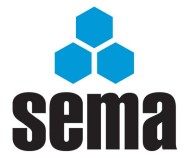 This month we bring you enquiries and answers relating to the bolting of racking to the floor and fixing racking to a wall.
This month we bring you enquiries and answers relating to the bolting of racking to the floor and fixing racking to a wall.
Should racking be bolted to the floor?
Q. We have some racking which is not bolted to the floor and is only used for storing plastic tubes that are only loaded / unloaded by hand. Does the racking require to be bolted to the floor and does the racking require load notices? Another rack which is bolted and used for storing pallet has no load notice on it. How do we determine the maximum load the beams can hold, and who should have put the notices on the racking?
A. You do not say if this particular storage is of tubes on their ends or laid horizontally, and indeed if they are a negligible weight or if they are something like the large diameter plastic gas or water pipes which can be a substantial weight.
In either case we would suggest an individual risk assessment considering the possibilities and consequences of tipping particularly due to accidental impacts with the rack. The SEMA recommendations are that all racking that can be approached by mechanical handling equipment, be this fork lift trucks or order pickers, should be fixed down. There is some slight allowance for low rise rack that will allow ‘perimeter fixing’ only, however a lot of rack manufacturers will not recommend this and insist that all feet are fixed to the floor.
If you have some racking which does not have any safe working load information on it the easiest way to overcome this is to go back to your supplier or the original manufacturer, if you know who this is, and ask them to calculate capacities based on the current configuration of the racking. Any supplier has the responsibility of providing information to their client on how to use the racking safely so this is not usually a problem.
However it does become a problem when the supplier is unknown! In this aspect we do try to help so if you have some digital photographs of the racking we are prepared to try to identify the manufacturer who should then be prepared to sort out a carrying capacity for you. If you have some photographs we will try to point you in a direction of a possible manufacturer.
If this cannot be done there are a few chartered structural engineers in the business who are prepared to calculate carrying capacities for you from first principals. However such work is normally expensive and unless there is a lot of racking involved it may be cheaper with very old racking to consider replacing it with more modern material where spares and replacement components are also more readily available for damage repair.
Fixing racking to a wall
Q. I recently attended a SEMA Racking Safety Awareness course. There is one question I would like to ask – can you bolt a metal stabilizer arm from the racking to a wall?
A. Fixing the racking to a wall is generally not recommended unless the connection is designed and approved by both the building designers and the racking supplier. Building designers are often reluctant to give permission for additional forces to be imposed on their structure in any event. Buildings also move under loading which can cause problems for the racking; alternatively the racking may impart forces to the building structure for which it has not been designed.
Racking manufacturers generally prefer the racking to be supported on the ground floor slab only. If there is a problem with the floor support then this will not be solved by connecting the racking to the building. If there is a problem with the use of the racking then it is suggested that this be discussed with the supplier or with an independent consultant.
SEMA Technical Enquiries
We hope you find the above articles, and those in previous editions, interesting. If you have a query send it to us by fax or email and we will do our best to have it answered by one of our technical experts.
SEMA Rack Safety Awareness and Inspection Courses
SEMA runs a one-day safety course on Rack Safety Awareness and Inspection. These courses are aimed at end users, giving an in-depth look at the need for inspections, how to conduct an assessment and what actions to take when this is completed. These courses are normally held at the SEMA headquarters but arrangements can be made to hold them at the delegates’ premises.
SEMA Approved Rack Inspectors Qualification
This qualification is aimed at professionals who conduct rack surveys as an integral and significant part of their duties. It involves delegates in undertaking an in-depth SEMA Course, together with an examination and practical assessment. CPD will be an important part of the qualification, demonstrating to end users that SEMA Approved Inspectors maintain a high professional standard.
SEMA Publications
SEMA publishes a number of documents including Codes of Practice, ‘Guides’ and European documents – all of which are available from our Office. For further information on these documents contact SEMA or visit our website, www.sema.org.uk. and click on ‘Codes of Practice’.
SEMA USERS Club
SEMA runs a USERS Club designed to be of benefit to purchasers and users of storage equipment. Members receive newsletters, access to specialised events and discounted rates on publications and codes of practice. For further information contact SEMA.
SEMA Tel: 0121 601 6350 www.sema.org.uk




Comments are closed.